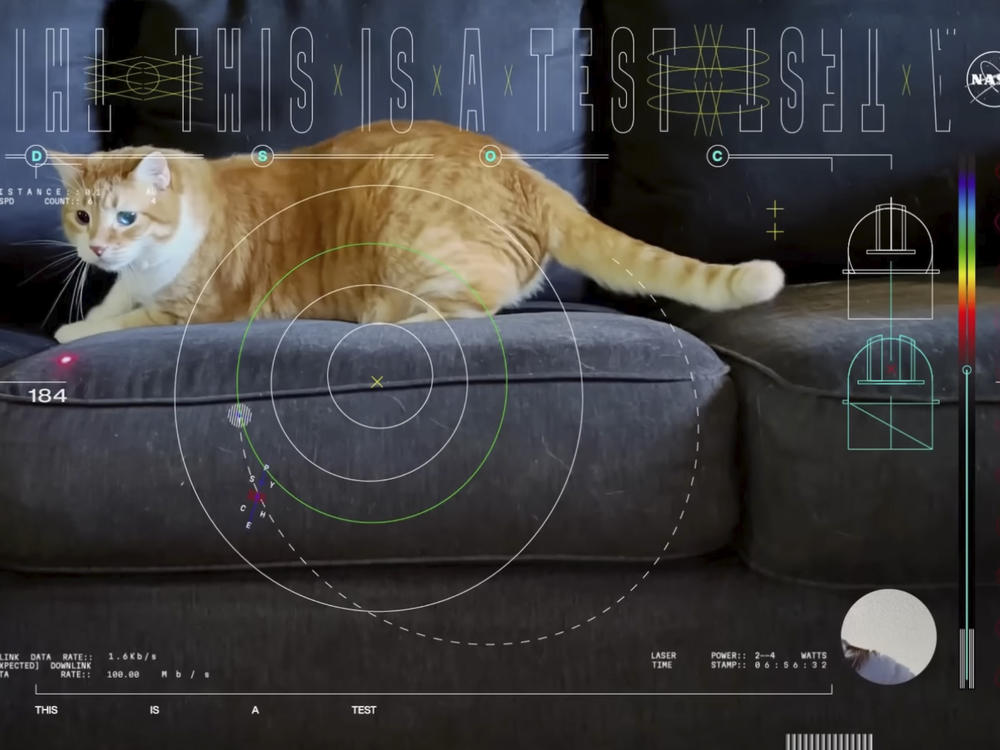Section Branding
Header Content
This cat video is out of this world, and NASA used a laser to beam it to Earth
Primary Content
CAPE CANAVERAL, Fla. — An orange tabby cat named Taters stars in the first video transmitted by laser from deep space, stealing the show as he chases a red laser light.
The 15-second video was beamed to Earth from NASA's Psyche spacecraft, 19 million miles (30 million kilometers) away. It took less than two minutes for the ultra high-definition video to reach Caltech's Palomar Observatory, sent at the test system's maximum rate of 267 megabits per second.
The video was loaded into Psyche's laser communication experiment before the spacecraft blasted off to a rare metal asteroid in October. The mission team at NASA's Jet Propulsion Laboratory in Pasadena, California, decided to feature an employee's 3-year-old playful kitty.
The video was streamed to Earth on Dec. 11 and released by NASA this week. Despite the vast distance, the test relayed the video faster than most broadband internet connections here on Earth, said the project's Ryan Rogalin.
NASA wants to improve communications from deep space, especially as astronauts gear up to return to the moon with an eye toward Mars. The laser demo is meant to transmit data at rates up to 100 times greater than the radio systems currently used by spacecraft far from Earth.
More test transmissions are planned as Psyche heads toward the main asteroid belt between Mars and Jupiter. But Taters won't be making anymore appearances, according to JPL.
Joby Harris, an art director in JPL's DesignLab, couldn't be prouder, but doesn't want his cat's newfound celebrity to go to his head.
"I'm celebrating his spotlight with him, but making sure he keeps his paws on the carpet," Harris said in an email Tuesday.
Copyright 2023 NPR. To see more, visit https://www.npr.org.

